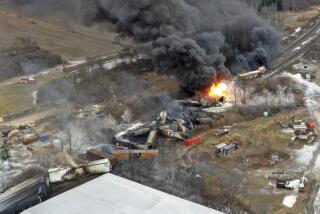Screening for terrorists
Homeland Security Secretary Janet Napolitano wisely has backed off her statement that âthe system workedâ because a Nigerian terrorist failed to blow up an airliner on Christmas Day. The system decidedly didnât work if an explosive could be brought aboard a plane by a man whose radicalization had been brought to the attention of the United States by his father, a prominent banker. But as Congress and the Obama administration undertake inquests into this near disaster, their primary focus should be on lapses in human intelligence, not technology.
It was only thanks to chance or ineptness that Umar Farouk Abdulmutallab failed to quickly detonate a plastic explosive and destroy a Detroit-bound Northwest airliner and the 290 people it was carrying. Abdulmutallab, a recent resident of Britain who says he received training in Yemen, wasnât on a no-fly or watch list and was spared a pat-down search that could have revealed that he was carrying a weapon. Had his name been flagged, more attention might have been paid to the fact that he paid cash for his ticket and checked no baggage.
Actually, Abdulmutallabâs mission could have been aborted even earlier. When he purchased his ticket from Lagos to Amsterdam on Dec. 16, a Nigerian official said, his passport and U.S. visa were scanned and his name was checked against a watch list. Despite his fatherâs intervention, Abdulmutallabâs name hadnât been added to either a 3,400-name no-fly list or a 14,000-name roster of persons who could be subjected to intensive searches. His name was added to a 555,000-name list of persons considered suspicious but less of a threat. Apparently he would have received greater scrutiny if he applied for another visa. The problem was that he already had one.
This sorry sequence of events recalls nothing so much as the failure of intelligence officials to correlate available data about the plotters of the 9/11 attacks. In both cases the problem wasnât a lack of information but an inability to sift through copious data. But some needles in a haystack are more conspicuous than others. On Monday, President Obama announced a review of the way names are added to watch lists. The answer isnât to load the lists with more names. What is required, at every stage of the process, is alertness to particularly suggestive details -- and, lest abuses occur, periodic reevaluation of names added in the past.
Some experts suggest that this incident demonstrates the need for vastly expanded use of high-technology screening devices. Before Congress accepts that counsel, however, it needs to focus on something that seemingly eluded officials in this case: the human factor.
More to Read
Sign up for Essential California
The most important California stories and recommendations in your inbox every morning.
You may occasionally receive promotional content from the Los Angeles Times.










